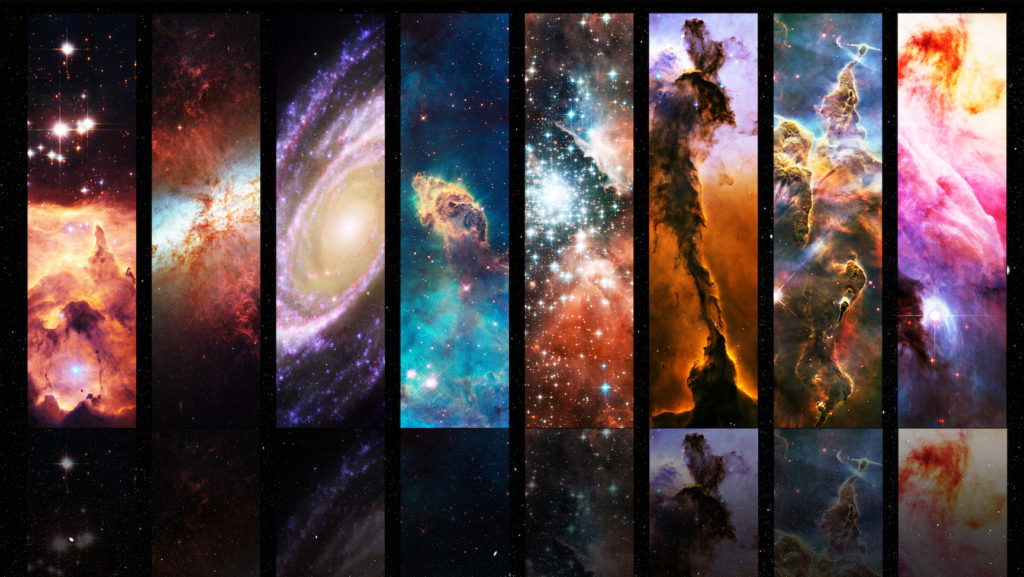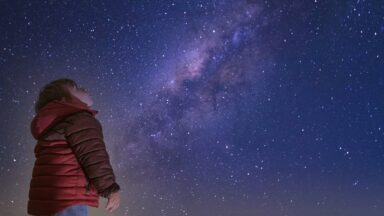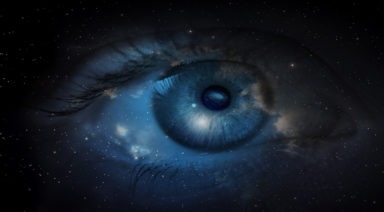Is the Eridanus Supervoid Actually Evidence of the Multiverse?
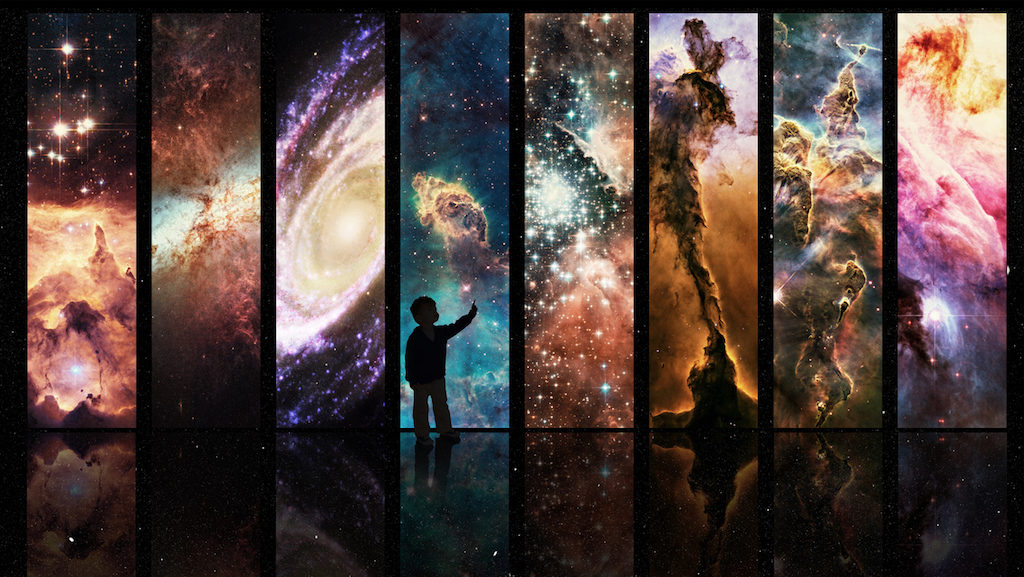
Quantum physics has proposed some peculiar theories like the multiverse, in which multiple, if not infinite universes may exist outside our own. But now a cold spot in our universe, originally identified as the Eridanus Supervoid, may actually be hard evidence that a parallel universe bumped into our own. If so, it has some bizarre implications.
The Cosmic Microwave Background
Since the Big Bang occurred, a layer of electromagnetic radiation remains throughout the entirety of our universe, known as the cosmic microwave background, or CMB. Scientists have mapped the CMB as a snapshot of what the universe looked like around 380,000 years old, when it was much hotter – 3,000 K to be precise.
This radiation is measured by its consistent temperature, now somewhere around 2.7 degrees Kelvin. But as scientists studied the CMB, they noticed a spot, some 3.5 billion lightyears wide, that was significantly colder than usual.
Normally, the deviation in temperature throughout the CMB averages around .02 K. But this CMB cold spot is .15 K colder than average, a significant anomaly.
One study believed this area was a supervoid, dubbed the Eridanus Supervoid, where the density of galaxies is significantly lower than the rest of the universe. Throughout space there are superclusters of galaxies connected by filaments. These filaments are thought to consist of dark matter and are the largest known structures in the universe forming boundaries between empty space.
The Eridanus Supervoid was originally believed to be just an empty void of space without any dark matter, but this theory has recently been brought into question. With the way the universe is expanding, galaxies will inevitably form clusters and grow apart from other clusters, given enough time. But with the supervoid, there hasn’t been enough time passed since the Big Bang to account for such a large gap.
Essentially, our knowledge of the way the universe works shouldn’t allow for such a massive void. And the odds of this area being a supervoid have become even less likely as scientists try to replicate the calculations that originally gave it that designation.
Several factors led to this conclusion, like the fact that there isn’t a large enough absence of galaxies for it to be that cold. In fact, the odds of having a cold spot that large are about 1-in-50 universes. Scientists also noticed that the distribution of heat throughout the universe was asymmetrical, with higher than average temperatures located in the southern hemisphere, near this cold spot. This does not fit with cosmology’s standard model which predicts a relatively even distribution throughout the universe.
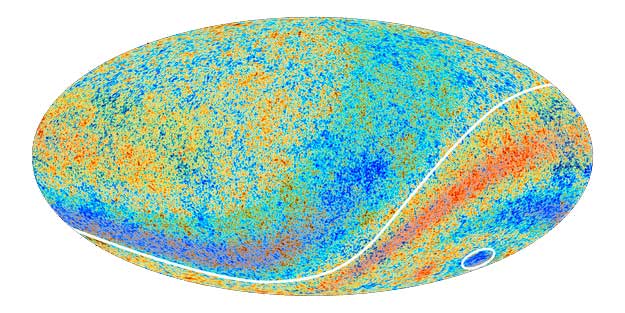
The CMB – Cold Spot circled
The Multiverse
Instead of a massive void, an idea made popular by astrophysicist Laura Mersini-Houghton, posits the possibility that the CMB cold spot is the result of a parallel universe that bumped into our own at some point in the past – a concept that many quantum physicists have entertained, but one that is at odds with traditional physics.
But Mersini-Houghton is no stranger to contentious theories. Just a few years ago she sparked controversy in the scientific world when she claimed that black holes do not exist – an idea that contradicted the work of notable astrophysicists like the late Stephen Hawking.
The multiverse, however, is a concept that has a lot of backing by string theorists, including Dr. Michio Kaku, who believes that everything is connected throughout a multitude of universes via vibrating cosmic strings. String theory states that our universe is just one of 10500 possible universes.
Mersini-Houghton is a proponent of the multiverse theory and says she believes the CMB cold spot to be the product of quantum entanglement between our universe and another, before they were separated by cosmic inflation. Einstein referred to this quantum behavior as spooky action at a distant.
String theory is complex, but the basic premise in terms of the multiverse is that the Big Bang was the result of an interaction between multiple universes. With the multiverse theory, a universe can grow new universes or split into two separate universes. This was first proposed by Alan Guth as part of his inflation theory.
Inflation theory is based on the counterintuitive idea that gravity can act as a repulsive force, rather than a purely attractive force. This has been hypothesized in the form of a white hole, the opposite of a black hole. Einstein’s theory of relativity allows for the possibility of white holes, connected to a black hole via a wormhole.
When a black hole pulls in everything around it, it becomes increasingly more dense. The light and matter it sucks in is then transported through a wormhole, before being ejected through a white hole. Kaku and Guth say they believe it’s possible that a white hole shooting out matter from anther universe could have resulted in the Big Bang that created our universe.
Kaku says that one way to conceptualize the multiverse is to picture a fish swimming in a pond. To the fish, reality consists of what it can see and where it can go within its pond. Essentially, it can only swim forward, backward, and side to side. Think of this as the way we currently perceive our universe.
But when the fish is one day lifted out of the pond by a human who breathes air and moves without fins, he is exposed to another dimension where the laws of physics and biology are entirely different from what he thought were the only possibilities of existence. String theorists believe this is a good analogy for other universes that may exist outside of our own. The laws of physics and biology in a parallel universe could be entirely different from everything we know.
In fact, it’s possible there are infinite universes, with infinite realities, in which everything is occurring simultaneously, all connected through vibrating cosmic strings. This would imply that every outcome is happening simultaneously in parallel universes as we live our lives.
Just before he passed away, Hawking published a paper, titled “A Smooth Exit from Eternal Inflation,” with physicist Thomas Hertog, imagining our universe as existing in a multiverse.
Hawking entertained the idea of a multiverse, though he had trouble fathoming the idea that it could be infinite. “Let’s try to tame the multiverse,” Hawking said to Hertog.
So the two ideated ways it could be tested and measured. They then proposed the theoretical possibility of a probe that could search for evidence left behind by a parallel universe. In the paper, they predicted that the probe might be able to find evidence at the outer reaches of our universe such as an imprint left in the CMB.
Could this have been a nod from Hawking to Mersini-Houghton, acknowledging the plausibility of her theory of a parallel universe leaving its mark on our own?
Ancient Symbols of Protection from Cultures Around the World

Throughout human history, people have searched for ways to safeguard themselves from negative energy, evil spirits, and other forces beyond their control. Across different cultures, ancient symbols of protection emerged to provide guidance, comfort, and spiritual protection. These protection symbols often reflect humanity’s close relationship with nature, the divine, and the mysteries of existence. They have appeared across continents, in various belief systems—from the ancient Egyptians, Greeks, and Celts to Native Americans, Vikings, Pagans, Christians, Jews, and Muslims. Each carries its own story and context, offering not only a symbol of protection against evil forces but also a source of good fortune, positive energy, and well-being in daily life.
If you feel drawn to these powerful protection symbols, it can be overwhelming to understand their origins and meanings. By exploring their cultural contexts and historical significance, you can discover which ancient protection symbols resonate most with you, whether you seek a protective amulet, a talisman, or a sacred sigil to incorporate into your spiritual practice.
Native American Protection Symbols
Native American tribes traditionally embraced ancient symbols of spiritual protection connected to the natural world. Animal totems, for example, represent protective powers derived from the wearer’s guardian spirit. Some of the most common animal symbols include:
- Bear: Represents leadership, physical strength, courage, and the ability to face challenges head-on.
- Crow: Embodies wisdom, intelligence, and keen awareness.
- Eagle: A revered bird symbolizing courage, wisdom, and strength; it also connects the earthly realm to the divine.
- Deer: Offers guidance to safety, gentleness, prosperity, and shelter.
- Gila Monster: Portrays preservation, resilience, and survival.
- Dragonfly: A sign of happiness, speed, and purity, often seen as a symbol of positive transformation.
- Lightning (Thunderbird): Associated with a legendary spirit of power, rain, and renewal.
In addition to animal totems, other Native American symbols provide spiritual protection:
- Arrows: These can signify defense, direction, and the warding off of evil spirits. An arrow pointing to the left often signals protection, while a downward-facing arrow can represent peace. Arrowheads carry protective properties, symbolizing alertness and focus.
- Cacti: Embody warmth, endurance, and maternal love, persisting even in harsh conditions.
- Drums: Used in sacred ceremonies to communicate with the Great Spirit, invoking divine protection.
- Eagle Feathers: Central to rituals and prayer, representing truth and spiritual activation.
- Medicine Bags: Typically made of animal hide and containing items like sage, tobacco, minerals, or a pipe, these bags were believed in ancient times to offer divine protection and good luck, especially in battle.
Ancient Egyptian, Celtic, Christian, and Greek Protection Symbols
Ancient Egypt, Greece, Celtic lands, and early Christian societies also developed significant ancient protection symbols. Within these various cultures, certain motifs recur, bridging continents and belief systems:
- The Cross: While often associated with the Christian faith, the cross also appears in many contexts. The ancient Egyptian symbol known as the ankh signifies eternal life and spiritual reflection. In Greek traditions, a cross represents the four directions and natural balance, much like in Native American symbolism.
- Eyes: In Egyptian culture, the Eye of Horus—an ancient Egyptian symbol resembling the right eye of the falcon god Horus—represents healing, protection, and the harmonizing of masculine and feminine energies. Similarly, the Eye of Ra symbolizes cosmic order and the sun’s protective force. Across cultures, the eye often appears as a symbol of protection—for example, the evil eye, a belief found in the Middle East, the Mediterranean, and beyond. Depictions like the nazar (a blue-eye-shaped amulet) are used to ward off evil forces and bad luck.
- The Hamsa Hand: Originating in the Middle East, North Africa, and regions influenced by Islamic and Jewish mysticism, as well as some Christian sects, the Hamsa hand is a protective amulet. Often used to repel the evil eye, it symbolizes divine guardianship, good fortune, and spiritual resilience. The Hamsa appears prominently in Arabic, Hebrew, and ancient Egyptian contexts, making it a potent emblem of spiritual protection.
- Wreaths: In early Christianity, wreaths represented eternity and the unending circle of life. Some believe displaying a wreath invites the spirit of Christ into the home. In Ancient Rome, wreaths were hung on doors after victorious battles. Today, wreaths can symbolize resilience, continuous growth, and persistent life force amid adversity.
Pagan, Wiccan, Norse, and Occult Protection Symbols
Beyond religious traditions, protection symbols from around the world appear in Pagan, Wiccan, Celtic, and Norse cultures. These symbols often focus on nature, cosmic cycles, and positive energy:
- Labyrinths (Wiccan/Pagan): Walking a labyrinth is a spiritual journey symbolizing wholeness, renewal, and guidance. One cannot get lost in a labyrinth, reflecting the soul’s steady path through life’s challenges.
- Yggdrasil (Norse): This great Viking tree of life connects all realms, symbolizing stability, wisdom, and cosmic order. It serves as an anchor of spiritual protection and unity.
- Powerful Protection Symbols in Norse Traditions:
- The Helm of Awe: A famed Viking symbol for protection, this Icelandic protection symbol (or Icelandic sigil) consists of eight rune-like arms radiating from a center point. It’s believed to protect the wearer from harm and instill fear in enemies.
- Thor’s Hammer (Mjölnir): Another Norse emblem, representing strength, courage, and the safeguarding of humanity. Mjölnir often symbolizes good luck in battles and marriages, as well as blessings for new ventures.
- Wiccan Protection Symbols:
- The Pentagram (Pentacle or Five-Pointed Star): Revered in Wicca, this shape can ward off evil spirits and negative influences. It often reflects the balance of earth, air, fire, water, and spirit.
- Mistletoe: Rooted in Celtic tradition, mistletoe is considered a protector against evil forces, ensuring good luck and prosperity for the community, livestock, and children.
- Runes and Other Amulets: Runes, ancient alphabetic symbols used by Viking and Germanic tribes, can serve as talismans, focusing positive energy and offering guidance. In many belief systems, wearing certain runes or sigils helps ward off negative energies and attract good fortune.

